Vicenza
Detail
Date of first edition: 1588
Date of this map: 1588
Dimensions (not including margins): 36 x 43,5 cm
Condition: Very good. Strong paper and wide margins.
Condition rating: A
Verso: text in Latin
Map reference: Taschen Br. Hog. p. 326
From: Civitates Orbis Terrarum, Liber quartus Urbium Praecipuarum totius Mundi. (Koeman, B&H4)
In stock
Description
CARTOUCHE: Very rich Vicenza, a city in the province of Tarvisium (Treviso).
COMMENTARY BY BRAUN: “The city itself is very beautiful and adorned by stately buildings, of which the town hall on the market square and the Dominican priory of the Friars Minor are the most elegant and the handsomest. A thorn from the Crown of Thorn worn by Christ our Saviour can be seen in the priory church, which Bartholomew Vicentius, bishop of this city and a Dominican friar from France, brought with him since it had been given to him by St Louis, king of France. This thorn is the relic most venerated by Vincentines and is carried about in the city each year with the greatest of veneration. There is also a noble library in the above-mentioned priory.”
The city is seen from the north in a bird’s-eye view. At the centre is the Piazza dei Signori with the nearly 80-m-high Torre di Piazza. To the right is the Basilica Palladiana, originally a Gothic palace (Palazzo della Ragione), of which little remains since it underwent extensive renovation in magnificent Renaissance style in the 16th century as did the adjacent buildings. The detailed depiction of the buildings and the rather sketchy street map are deceptive and do not do justice to the size and magnificence of this densely built city. Originally founded by the Euganei, Vicenza became Roman in 177 BC. In 1404 the city passed to Venice, as indicated by the winged lion on the left-hand edge of the main square. Many of the earlier buildings were either remodelled or rebuilt by Andrea Palladio in the second half of the 16th century, including the superb Piazza dei Signori complex. (Taschen)
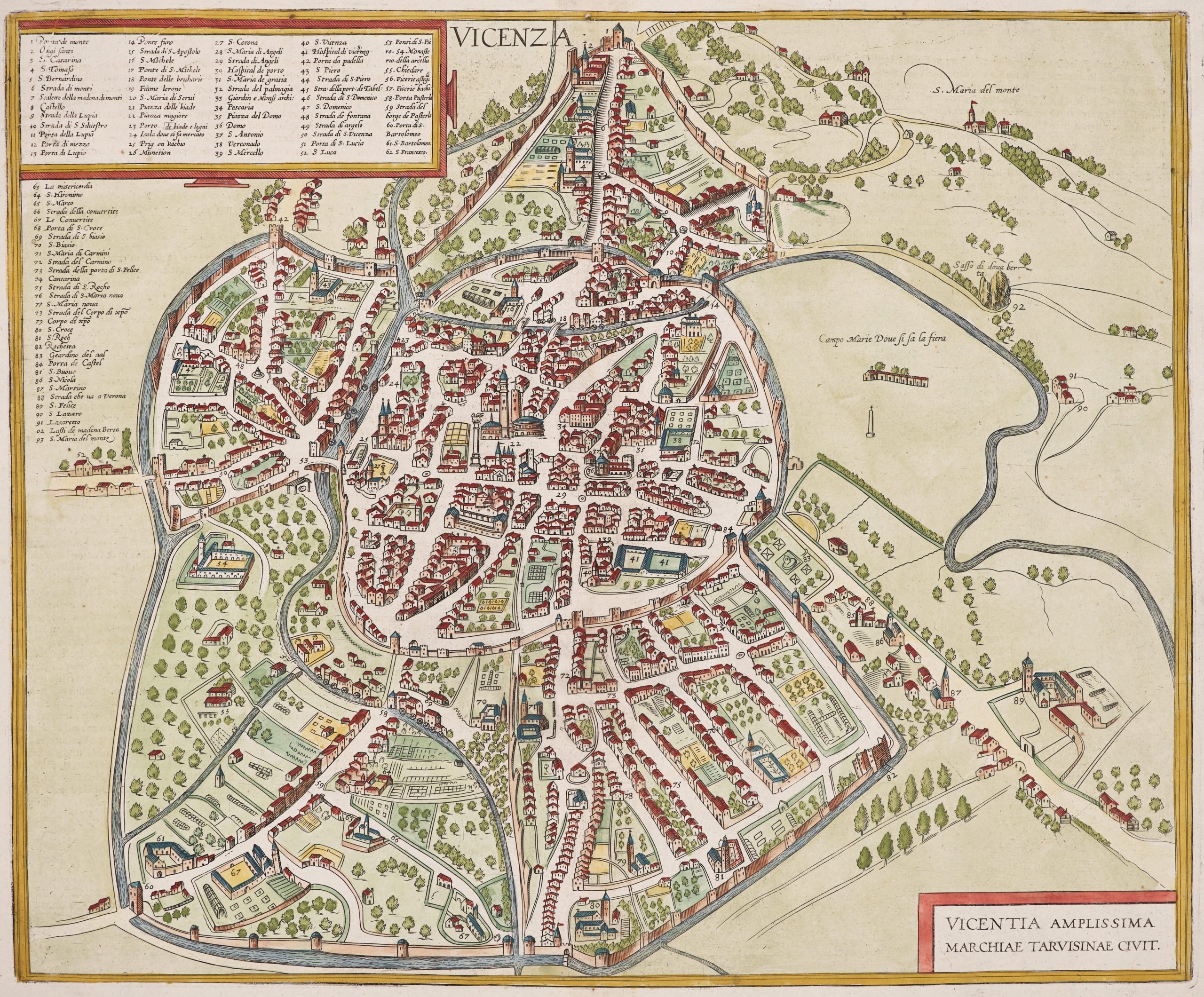
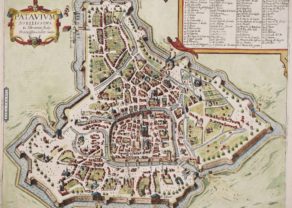
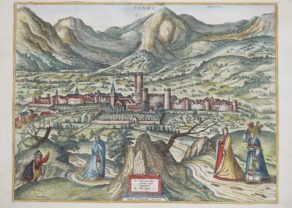
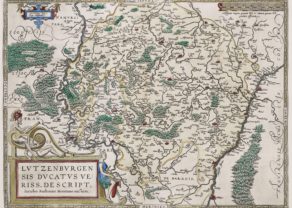
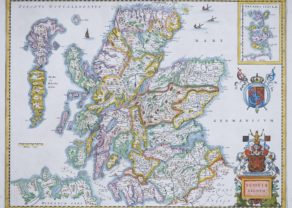
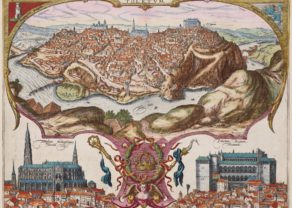
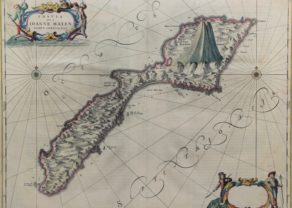
V for Vicenza
This is Palladio homeland, pur sang. Andrea Palladio (1508 – 1580; so really a contemporary of Mercator, Ortelius and Hogenberg!) embellished the Veneto surroundings with elegant renaissance palazzi and villas. Vaut le voyage!
The “Palladian architectural style” adhered to classical Roman principles which he rediscovered. One of his famous villas (many of them built for the Venetian nobility and its merchants) is the Rotonda.
However, his ultimate mind blowing masterwork is the Teatro Olympico, with trompe-l’oeil onstage scenery. Unfortunately, this theater was built downtown old Vicenza(with its medieval walls) between 1580 and 1585 and is not shown on this map. It is located somewhere at the left of this map, close to the walls. The city holds a permanent exhibition of scale models of his palazzi and villas! The Teatro Olimpico is, along with the Teatro all’antica in Sabbioneta and the Teatro Farnese in Parma, one of only three Renaissance theaters remaining in existence.
Clearly visible is the Piazza del Signori (number 22), with its 82 m high Torre Bissara (left of middle). The map shows the tower, but also with the two previously constructed round buildings. The famous Basilica Palladiana, built from 1546 onward is not yet to be seen.
The city cathedral (whose cupola was planned by Palladio), just left under the Piazza, is correctly represented.
A cartographic note: Antonio Pigafetta, companion of Magellan at his world circumnavigation, was born and raised here. Thanks to Pigafetta, who kept a dairy of the entire venture, we know so much of this amazing voyage. He was of the 18 survivors out of the 270 started! A small plate on a God-forgotten house in a evenly forgotten street downtown gives tribute to him.